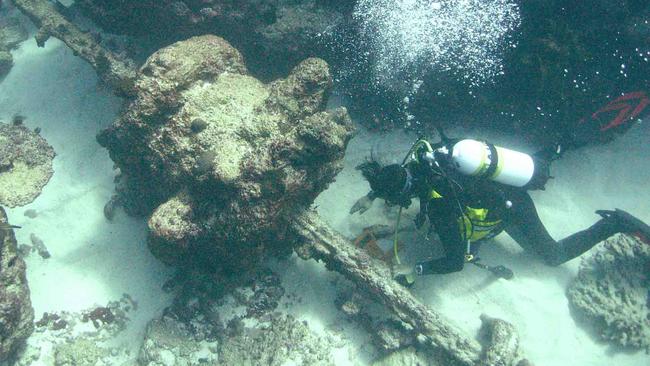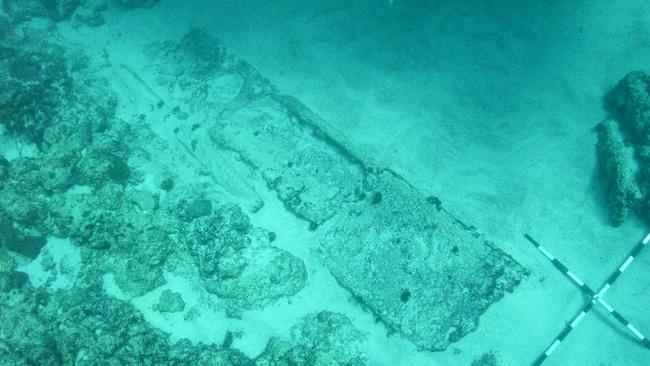Treasure chest theory tanks as MH370 search brings shipwrecks into view
A ‘mystery chest’ from a shipwreck discovered during the search for MH370 has been identified as an iron water tank.

A maritime archaeologist has identified the “mystery chest” from a shipwreck discovered during the search for MH370 as an iron water tank, not bounty as had been speculated in February.
The “chest” that search vessel Seabed Constructor appeared to be looking at when it doubled round on itself before coming into port at Henderson, south of Perth, to re-supply in February is the water tank of a mid-to-late 19th-century coal ship.
A report by Ross Anderson, curator of Maritime Archaeology at the West Australian Museum, examined two shipwrecks found on the floor of the Indian Ocean after the Australian Transport Safety Bureau contracted survey company Fugro in 2014 to search for the missing Malaysian Airlines Boeing 777. In the course of a search lasting until January 17 last year, four sonar contacts were identified as shipwreck sites. Two vessels were identified relatively quickly as late 20th-century motorised fishing trawlers but the ATSB sought advice from the WA Museum on the two other wrecks.

Dr Anderson’s report found a wreck discovered in May 2015 in 3900m of water was a wood and iron cargo ship and likely about 225 tonnes, considering the style of three anchors found on the ocean floor.
A 6m-long rectangular metal object was the largest feature at the site and was identified as a ship’s iron water tank, not a chest. Metal tanks were increasingly fitted to ships from about 1811 to store water, as well as perishable goods such as bread.
“On the basis of the coal cargo and the site’s location along the Roaring Forties trade route to Southeast Asia, there is a high probability that the vessel was voyaging from Europe to a major Asian or Chinese port such as Singapore, Macassar, Batavia, Macau or Hong Kong, or possibly to an Australian port such as Fremantle or Adelaide,” Dr Anderson writes. He suggests two possible candidates are the wooden barque Magdala, lost in 1882 while on a voyage from Penarth to Ternate with a cargo of coal, and wooden brig W. Gordon, lost in 1876 on a voyage from Glasgow to Adelaide.

The second shipwreck the museum was asked to report on was discovered by the MH370 search team on December 19, 2015, lying upright at a depth of 3732m. The sonar data depicts features typical of a large 1860-90s iron, two-decked sailing ship weighing up to 1500 tonnes.
A sample of coal from the site was sent to Geoscience Australia in Canberra where analysis found it was probably British in origin.
Based on available historical and archaeological evidence, the wreck is likely to be the West Ridge, lost in 1883.




To join the conversation, please log in. Don't have an account? Register
Join the conversation, you are commenting as Logout